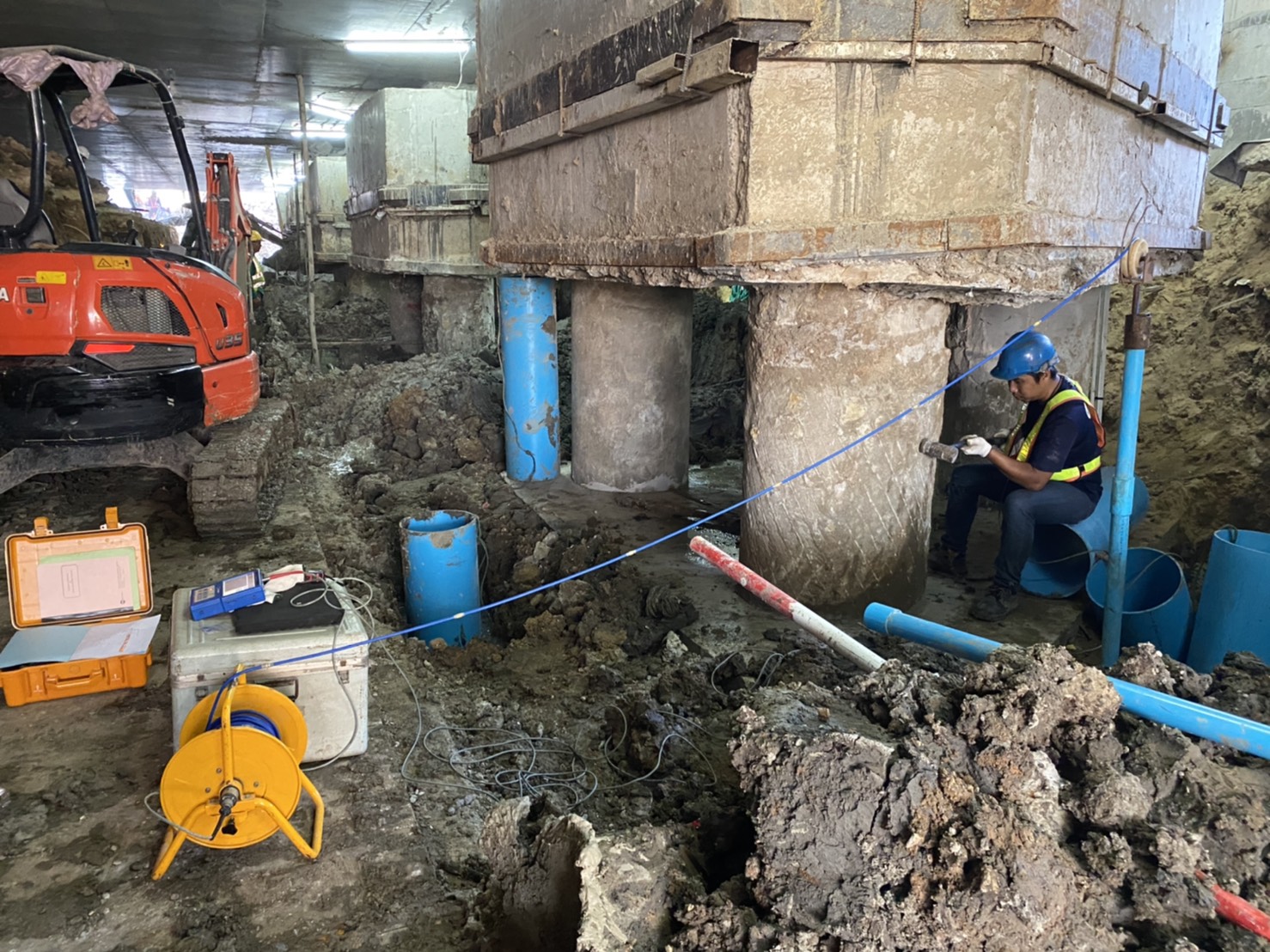4. Parallel Seismic Test
Parallel Seismic Testing system is designed to determine the length and integrity of foundations when the top is not accessible or when the pile is too long and slender to test with echo techniques, or below a buried pile cap. Ultimately, Parallel Seismic testing provides information concerning the length and compression velocity of foundations and can be used on concrete, wood, and steel foundations. In Parallel Seismic test method, the exposed top of the foundation is impacted by an impulsive hammer to generate compression waves which travel down the foundation and are refracted to the surrounding soil. The refracted wave arrival is tracked at regular intervals by a hydrophone receiver in a cased borehole. The depth of the foundation is determined by plotting the first arrival times as a function of depth and observing the depth where a change of slope occurs. For this test method, a borehole must be drilled within 1.00 to 1.50 of the foundation edge and should extend at least 5.00 to 10.00 m. deeper than the anticipated foundation depth. The borehole must be drilled as vertical as possible, cased with steel or PVC pipes, capped at the bottom; and, in the case of hydrophone receivers, be filled with water prior to testing.


Parallel Seismic Testing system is designed to determine the length and integrity of foundations when the top is not accessible or when the pile is too long and slender to test with echo techniques, or below a buried pile cap. Ultimately, Parallel Seismic testing provides information concerning the length and compression velocity of foundations and can be used on concrete, wood, and steel foundations. In Parallel Seismic test method, the exposed top of the foundation is impacted by an impulsive hammer to generate compression waves which travel down the foundation and are refracted to the surrounding soil. The refracted wave arrival is tracked at regular intervals by a hydrophone receiver in a cased borehole. The depth of the foundation is determined by plotting the first arrival times as a function of depth and observing the depth where a change of slope occurs. For this test method, a borehole must be drilled within 1.00 to 1.50 of the foundation edge and should extend at least 5.00 to 10.00 m. deeper than the anticipated foundation depth. The borehole must be drilled as vertical as possible, cased with steel or PVC pipes, capped at the bottom; and, in the case of hydrophone receivers, be filled with water prior to testing.















